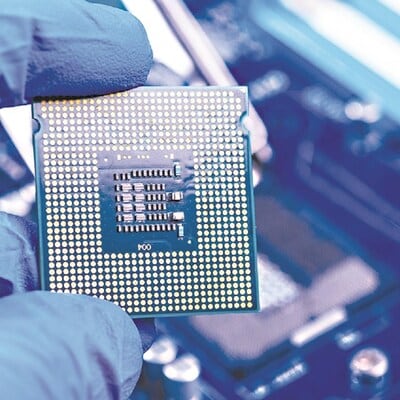On the same day that the US State Department revealed its collaboration with the Indian Semiconductor Mission (ISM) under the Union Ministry of Electronics and IT to explore opportunities to expand the global semiconductor ecosystem, reports emerged that ISM is preparing to introduce a new incentive package to attract foreign chipmakers, packagers, testers and component suppliers.
TO live mint The report, citing Akash Tripathi, CEO of ISM, said that a specific incentive value has not yet been finalised. He mentioned that the package would also include incentives for components, which is a first.
At a press conference on Monday, coinciding with ISM’s announcement of a partnership with the United States for semiconductor development, Tripathi stressed that the aim is to support the industry with appropriate incentives for the next decade. He also noted that about 20 new proposals are currently being evaluated, including those for large-scale manufacturing plants, assembly, testing and packaging facilities.
The next stimulus package is expected to exceed $10 billion, the report said, citing two government officials.
Incentives for semiconductors in India
India’s first initiative to offer incentives to semiconductors saw a similar outlay of $10 billion over six years. In December 2021, the government introduced the Production Linked Incentive (PLI) scheme aimed at encouraging the establishment of semiconductor and display manufacturing units as well as chip packaging, assembly and testing facilities. However, a separate allocation of $440 million under the Scheme for Promotion of Manufacturing in Electronics Products (SPECS) was earmarked for component production.
The semiconductor partnership with the US
The announcement of the new incentive package coincided with the U.S. State Department’s announcement of a partnership with ISM to expand and diversify the global semiconductor ecosystem. The collaboration falls under the U.S. International Technology Innovation and Security (ITSI) fund, a $500 million initiative introduced as part of the Creating Useful Incentives for Semiconductor (Chip) Production and Science Act in August 2022.
The two countries are set to conduct a joint study of their respective semiconductor ecosystems, after which they will identify “potential joint initiatives to strengthen and grow this critical sector.” Livemint reported that the fund could eventually include chip trade deals in the future, which could serve important sectors such as defense and consumer industries.
Tripathi further revealed that talks are underway to modernise the Semiconductor Laboratory (SCL), India’s only operational chip manufacturing unit. He noted that several proposals for modernisation have already been received and the government is working out the details.
Tripathi also shared that the government, under his leadership, has approved incentives worth Rs 1.52 trillion ($18.1 billion). More announcements on key proposals are expected when the first edition of ‘Semicon India’ kicks off in Greater Noida, Uttar Pradesh.
Progress of India’s chip manufacturing ecosystem
India’s efforts to build a semiconductor ecosystem have already made significant progress: Tata Electronics and Taiwanese Powerchip Semiconductor Manufacturing Company (PSMC) have received approval for an $11 billion chip manufacturing plant. In addition, the ISM has approved four outsourced semiconductor assembly and test (OSAT) facilities.
Other facilities have been announced, including a partnership between China’s Foxconn and Noida-based HCL Technologies, and a $10 billion chip manufacturing facility in Maharashtra, a joint project between Israel’s Tower Semiconductor and India’s Adani Group, according to the state government.
However, Tripathi clarified that while ISM is reviewing an application from Tower Semiconductor, he did not confirm whether the Adani Group is involved in the project.
Possible challenges
Despite positive developments, challenges remain. According to Yee-Shyi Chang, Taiwan’s technology ambassador to India for the Indian Cellular and Electronics Association (ICEA), India will need to train at least 10,000 engineers a year in semiconductor manufacturing to become a viable hub for global chipmakers, Mint reported.
Chang noted that India has an advantage over the United States in terms of talent availability, but the country’s semiconductor industry will take 10 to 15 years to mature.
First published: September 10, 2024 | 9:48 am IS
Disclaimer:
The information contained in this post is for general information purposes only. We make no representations or warranties of any kind, express or implied, about the completeness, accuracy, reliability, suitability or availability with respect to the website or the information, products, services, or related graphics contained on the post for any purpose.
We respect the intellectual property rights of content creators. If you are the owner of any material featured on our website and have concerns about its use, please contact us. We are committed to addressing any copyright issues promptly and will remove any material within 2 days of receiving a request from the rightful owner.

